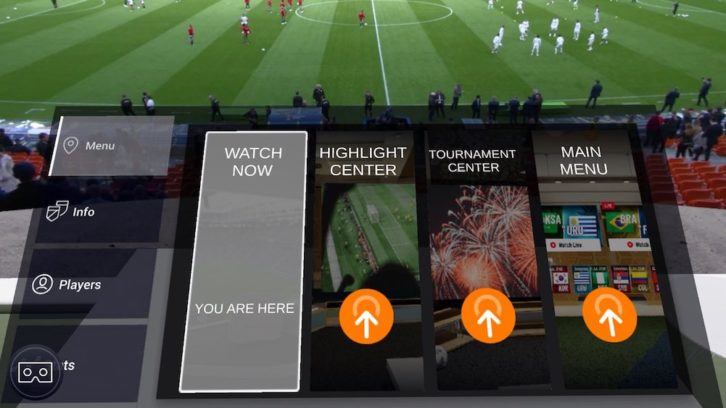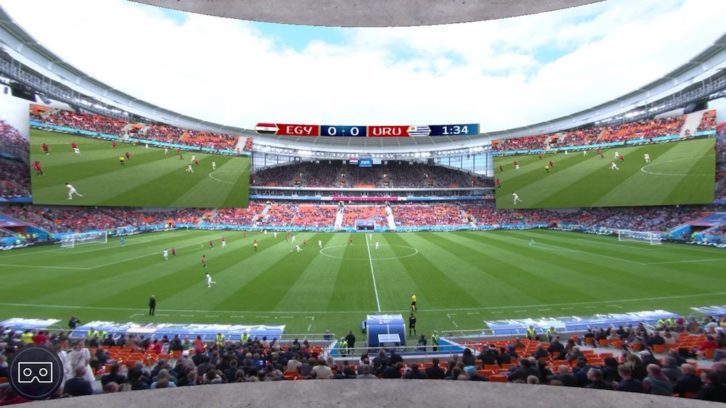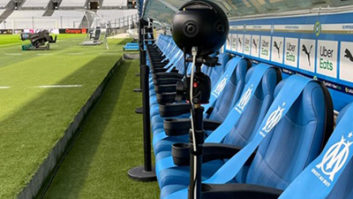Sport is one of the most popular types of entertainment. With a strong following and massive competition for the broadcast of sporting events, rights holders are looking for ways to make their coverage generate as much consumer worth as possible, which in turn maximises revenue. Innovation and immersive technology is already helping some broadcasters stand out with their sports coverage, yet it has the potential to do so much more.
Think back to the greatest day of your life. What is your greatest memory? When your team won the league, your hero crossed the line first, or a moment you witnessed legends being made. Sport rightly elicits the strongest of feelings from the most passionate of fans. Broadcasters and technology providers have the power to delight viewers and users with the most rich of environments to experience this. AR (augmented reality) and VR (virtual reality) have the ability to add layers of immersive content to the viewing experience of fans, creating a fantastical field of material.
Audiences are talking about what they are seeing, sharing their utter disappointment from a disallowed goal or the disqualification of their favourite athlete, to the climactic highs of seeing the greatest boxer of a generation named champion or Usain Bolt breaking 100m world records. Fans are blogging and posting on social media, recording events on mobile phones and creating a wealth of media around their favourite sporting highlights. Technology adds to those moments that matter and sporting brands are rebooting the way in which fans interact with teams, players, sponsors and athletes.
AR and AI
AR combined with AI takes data and makes it available to fans to consume alongside the main broadcast feed. Adding a second screen enriches the viewing environment, fuelling the ability to be completely absorbed. Couple this with voice controls from the user and AI interrogating media and data and suddenly broadcasters have multiple ways to leverage content. Audiences can now interact to understand league standings, specific player data such as the number of red cards they’ve received, number of passes made etc. The act of leaning back and watching a soccer game suddenly shifts fans to lean forward and engage in a truly meaningful way. Being able to interact with content creates a very personalised and individual experience that delights audiences.
The NFL has been championing immersive technologies, leading fans with real-time graphics, and accessing stats collected by chips embedded in players’ clothing. They also offer consumers an app that features an AI chatbot called JOAN, as well as letting fans predict the outcome of plays with their predictive game, I Called It. On top of all this they are using the internet of things to build ‘stadiums of the future’, integrating AR and VR into the fan experience. This truly is innovative thinking in action, giving fans and sponsors the level of experience they demand.

AR provides a second stream of content to supplement the main broadcast. This can be portrayed/projected onto typical household objects such as a coffee table, or a wall, and at the moment the main blockage to creating a truly comfortable experience is the provision of the required wearable device to interact with this content. It should be noted that the tech providers have come a long way from early offerings that could induce nausea. In fact, there are over one billion AR enabled devices in the wild today, projected to 3.4 billion by 2020.
The mass market is already there in terms of hardware, but until wearables become as cool, and importantly as comfortable, as the latest pair of Ray-Bans they may take time to become mainstream. Until this evolution occurs we may see AR be slow to reach mass market. This development is not far away however, with rumours emerging about augmented reality Ray-Ban glasses due to be launched from Facebook and Luxottica.
What’s interesting though is that here and now the likes of Google and Apple are seeing this moment coming. They are already building capability to develop AR into their existing frameworks for their devices. It’s possible to build AR experience into Android and iPhone apps, now. The toolset exists to develop AR experiences because Apple and Google anticipate the approaching mass market situation. As the toolsets already exist, it makes sense to use those to develop AR experiences to be ready for when AR headsets hit mass market, as they will likely go mainstream in very little time.
AR has multiple applications in sport; to provide multiple data layers, player statistics, game statistics and different camera screen options. There are opportunities to create virtual studios; imagine the coach of the team projected onto the chair across from you in your living room. It would feel like a pre- or post-game interview with the coach, in the form of a personal conversation. There is also a use case for sponsors projecting logos onto a surface, and additional merchandising opportunities could also boost revenues.
A further use of AR to create an immersive viewing experience is through AR filters, such as those that brands bring to Snapchat and Facebook. In the lead up to major sporting events such as league finals, the Super Bowl, World Cups etc, fans are using fun and quirky filters to show their loyalty and support for their teams.

Field based sports are not the only beneficiaries of AR and VR. Consider viewing a major road cycling race. Often main broadcasts are focused on the lead rider, or a pack of riders set further behind the lead. AR offers viewers the chance to select their own viewpoints. They can interrogate the second stream of content to understand the altitude of the riders and the current stage in relation to the whole course. This provides a greatly enriched viewing experience with fuller understanding and context of the race in hand.
VR
After a few false starts real strides are being made to develop better VR experiences. Progress has been made to provide a truly encompassing stadium feel to audiences. Using the latest Oculus devices viewers can enjoy a 360-degree experience with the ability to draw down player data, search through clips, or access team social media feeds.
We believe this additional layer of data and content is increasingly how fans want to interact, from the comfort of home and the experience of a live event. The crucial point is that through VR, audiences can experience courtside or ringside views in a ‘live’ way rather than watching a live match at distance through their TV screens. Just last year an NBA team, the Sacramento Kings, streamed games in VR whilst simultaneously mining crypto currencies to generate funds for scholarships.
It’s clear that stadiums and sporting brands need to stay innovative and forward-thinking to avoid losing the interest of fans. Otherwise they face the danger of becoming irrelevant in this fast-moving and ever connected world.







